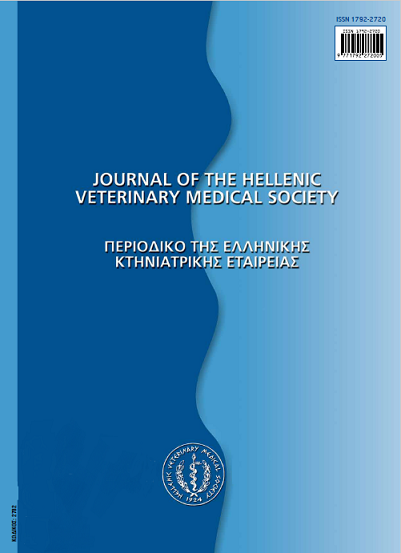Infection and pathological lesions of lymph nodes induced by Linguatula serrata nymphs in one-humped camels in Iran

Abstract
Linguatula serrata (Pentastomida: Linguatulidae) known tong-worm is a cosmopolitan, zoonotic, and obligate endoparasite. The parasite lives in the nasopharyngeal region of the final hosts, which primarily include dogs and other carnivores. Various herbivores, including, camels serve as the best intermediate hosts for nymph stages. In present study the mesenteric lymph nodes of 101camels were examined for infection to L. serrata macroscopically and histopathologically. The infected and normal lymph nodes were processed for histopathology. The results indicated that out of 101 sampled 33 (32.67%) were infected. Macroscopic examination revealed that the infected lymph nodes are swollen and dark, with rubbery consistency, some with subcapsular hemorrhage on cutting. Extensive hemorrhage occurred in various parts of infected lymph nodes. A section of L. serrata parasite was observed near one of the hemorrhage centers. Neutrophil count was very high in these centers and giant cells were present around the parasite, indicating granulomatous reaction. Our findings confirmed that different regions of Iran is an endemic for L. serrata infections. Because L. serrata is a zoonotic parasite, preventive measures should be adopted to disrupt the parasite’s life cycle and minimize the risk of infection in both humans and other animals.
Article Details
- How to Cite
-
TAVASSOLI, M., HOBBENAGHI, R., KARGOZARI, A., & REZAEIA, H. (2018). Infection and pathological lesions of lymph nodes induced by Linguatula serrata nymphs in one-humped camels in Iran. Journal of the Hellenic Veterinary Medical Society, 68(4), 529–534. https://doi.org/10.12681/jhvms.16048
- Issue
- Vol. 68 No. 4 (2017)
- Section
- Research Articles

This work is licensed under a Creative Commons Attribution-NonCommercial 4.0 International License.
Authors who publish with this journal agree to the following terms:
· Authors retain copyright and grant the journal right of first publication with the work simultaneously licensed under a Creative Commons Attribution Non-Commercial License that allows others to share the work with an acknowledgement of the work's authorship and initial publication in this journal.
· Authors are able to enter into separate, additional contractual arrangements for the non-exclusive distribution of the journal's published version of the work (e.g. post it to an institutional repository or publish it in a book), with an acknowledgement of its initial publication in this journal.
· Authors are permitted and encouraged to post their work online (preferably in institutional repositories or on their website) prior to and during the submission process, as it can lead to productive exchanges, as well as earlier and greater citation of published work.


